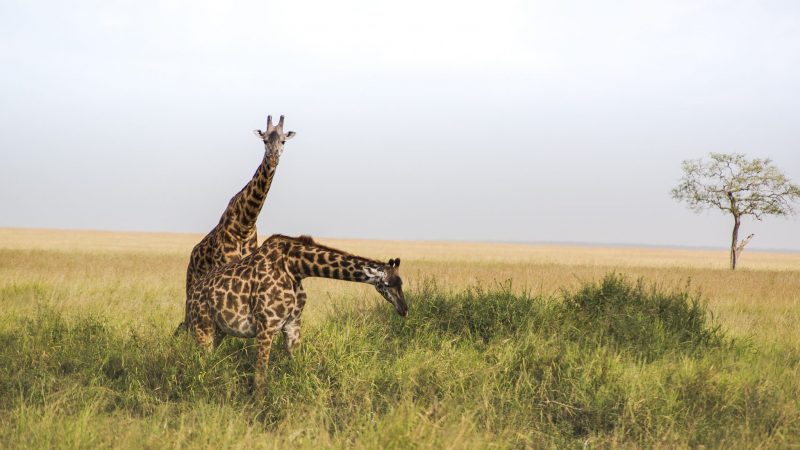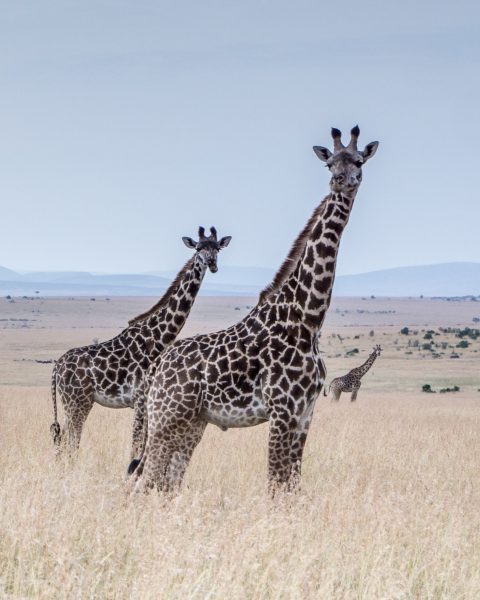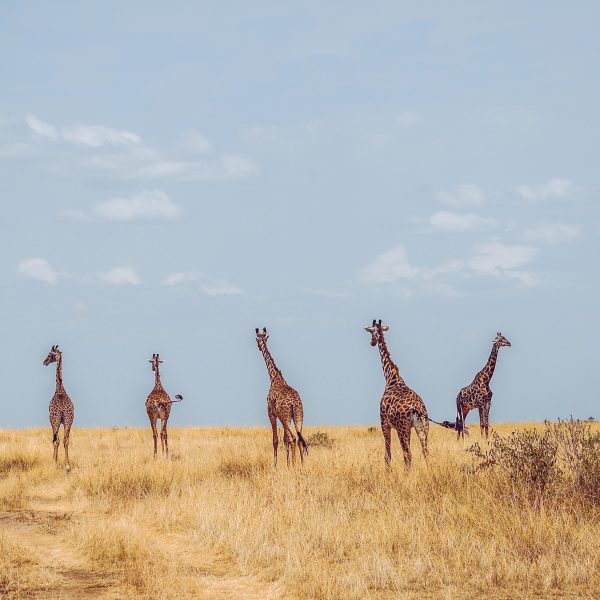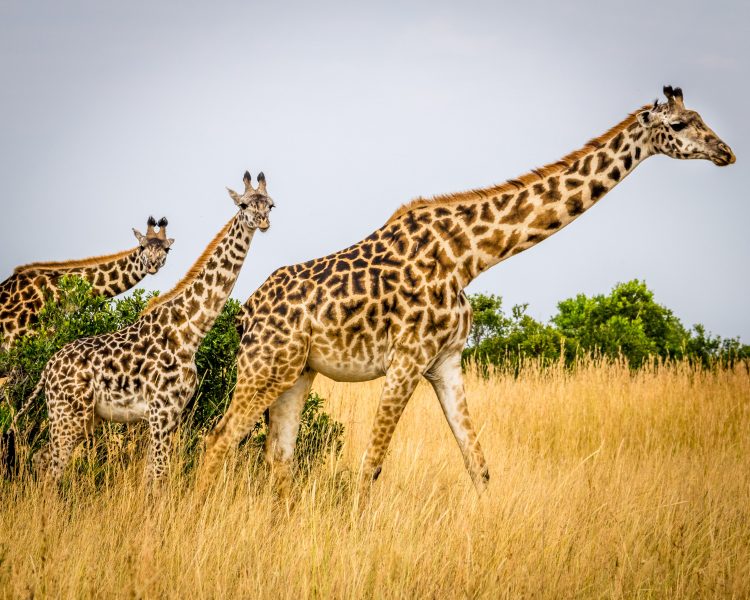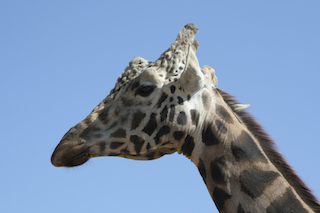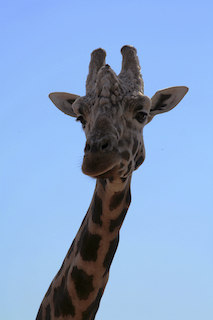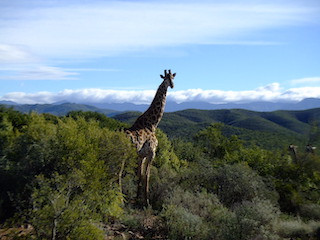Study Of Maasai Giraffes In Kenya
Considered as the icons of Kenyan plains, Maasai giraffe is the largest subspecies of the giraffe family. Another word for Maasai giraffe is Kilimanjaro giraffe. It is a remarkable species of giraffes out of the nine species. This gentle, iconic subspecies is the tallest terrestrial animal in the world. Initially, the Maasai giraffe occurred throughout Africa. However, because of loss of habitat and deforestation, today they are only found in the savannas of Kenya, Tanzania, Ethiopia and Somalia.
Tracing family roots
Maasai giraffe belongs to the Giraffidae family, discovered in 1898 for the first time. Herr von Tippelskirch who was a member affiliated to a German scientific expedition to Kenya gave it its scientific name. They took information and skin samples of Maasai giraffes back to Europe for research purposes. The result was an interesting study of its anatomy and behavioral patterns. The present-day scientists, armed with this knowledge, are in a much better position to put such conservation measures in place that would protect this vulnerable species from survival threats.
Peculiar anatomical features
A Maasai giraffe’s tail is 8 feet in length and is the longest of all terrestrial animals. The neck has special valves so that when a giraffe bends over, they don’t suffer any damage due to the rushing blood because the valves control the blood’s flow to the head. The heart weighs 25 pounds on average. It pumps 60 liters of blood in a minute. Apart from its tail, neck, and heart, three other notable features of Maasai giraffes are its long legs, its skin patches, and its horns.
Strong sturdy legs
The design of the feet and the legs of Maasai giraffes makes them very formidable. Their feet measure 12 inches in length, almost the size of a dinner plate. Their legs are 2 m long, which is formed by seven long vertebrae, just like their necks. The bottom part looks like sticks. But they are sturdy enough to support the weight of such a huge animal. One swift kick can kill even their predators. Compared to other species that do not have the patches on the legs, the Maasai giraffes have them entirely covering the limbs.
Patchy dressing sense
The thing that differentiates a Maasai giraffe from other species is the design of its irregular star-shaped patches fur which is of several shades of brown. The spots on the Maasai giraffes are jagged compared to the other species. Its skin resembles dried oak leaves that can have several shades, like orange or cream. The patches are buff-colored from below the knee. The spots on the coat are like human fingerprints because no two patterns are the same. They can be used to identify a giraffe. Males have darker spots than females, with the dominant male having the darkest. It is unknown what causes this physical change.
Head of hair
A male Maasai giraffe has a bald head. However, the female has thick head hair. The skin-covered ossicones or horns of male Maasai giraffes are more developed than the females. The horns of the females are thinner and covered with hair. When they age, the blokes develop calcium deposits in their skulls. The appearance gives the impression that they have more than two ossicones.
Evolutionary behavioral patterns
The evolution of Maasai giraffe isn’t entirely known, but they belong to the families of deer. The long neck is an evolution solution to get to food higher up that are not accessible to any other savanna dwellers except elephants. Some adhere to the Darwinian concept that this is a genetic factor that first developed and then let those with it survive longer than the ones that did not have this genetic predisposition. The male giraffe in a herd do not often interact but tend to be aggressive when it involves mating rights or dominating the group. The pack moves around through a territory that can span 50 miles. They aren’t particularly territorial, but the females and the calves seem to form strong bonds.
Too much eating
Maasai giraffes are diurnal who spend most of the day eating because they only get a small amount of food into their stomach in each bite. Their mouths are small compared to their bodies. Hence, they cannot fill their mouths while feeding but slowly ingest food in small amounts taking their time to chew it. They have a four-chambered stomach. When not eating, they are chewing the cud. The whistling-thorn acacia tree leaves are the favorite of Maasai giraffes. As the name suggests, acacia trees are full of thorns. But they manage to reach around and swallow the dangerous thorns with the help of their long 20-inch tongue and prehensile lips as well as the thick saliva they produce. The females eat from the bottom branches, while the males eat from the top branches.
Survival without water
Maasai giraffes spend several days without drinking because they extract water from the food they eat. These giraffes live in areas where their food has more water, which means they can survive for several days without water. Acacia leaves have a lot of water. So, they can go a long way without having to get a drink. But when water is available, giraffes can drink around 10 gallons a day.
Threats to survival
An estimated 40,000 Maasai giraffes freely roam the savannas of Kenya. The Maasai giraffes are classified as vulnerable because its population has fallen. Lions and hyenas are the main predators of Maasai giraffes, and their only defense apart from speed is their powerful kick that renders any animal unconscious and in some cases, decapitate it. Apart from that, habitat loss, illegal hunting, disease, and poaching have also decimated its numbers. The protection of Maasai giraffes in captivity has caused controversy, although the females have shown a good response to mating. Births have occurred successfully, which helps to its conservation.
Drastic population decline
The population of Maasai giraffes has declined by 95% between 1989 and 2003. Scientists blame explosion in the human settlement around the 1,500-sq.km unfenced parks and reserves for the plummeting populations of giraffes. Traditionally, wild animals used the Maasai Mara Reserve for grazing. Until the last couple of decades, Maasai herders and their livestock coexisted with the wild animals. But rapid population growth and policy neglect have seen the number of settlements surge along the border of Maasai Mara. The area is now being turned over to crop production and livestock. It meant that giraffes are now competing for habitat with crop cultivation and cattle. The destruction of trees was also having an adverse effect.
Critical conservation issues
Maasai giraffes are considered to be one of the most emblematic animals on the planet. But despite its popularity, few are aware and know surprisingly little about the conservation issues they face. Wild Nature Institute scientists are conducting the biggest giraffe conservation research study to discover where Maasai giraffes are not doing well and why. Using a computer program, they recognize and monitor each of the 2,100 giraffes that are under observation throughout their lifetimes. The program aids in identifying individual giraffes through their unique fur pattern from photographs. The research is also working to protect areas critical to the conservation. Will these efforts changes its conservation status from vulnerable to extinct or safe? Time will tell.
5 Frequently Asked Questions About Maasai Giraffe
To receive a colourful digibook about giraffe with videos, images and text, please fill out the following form or simply email us on safaris@safari-center.com

